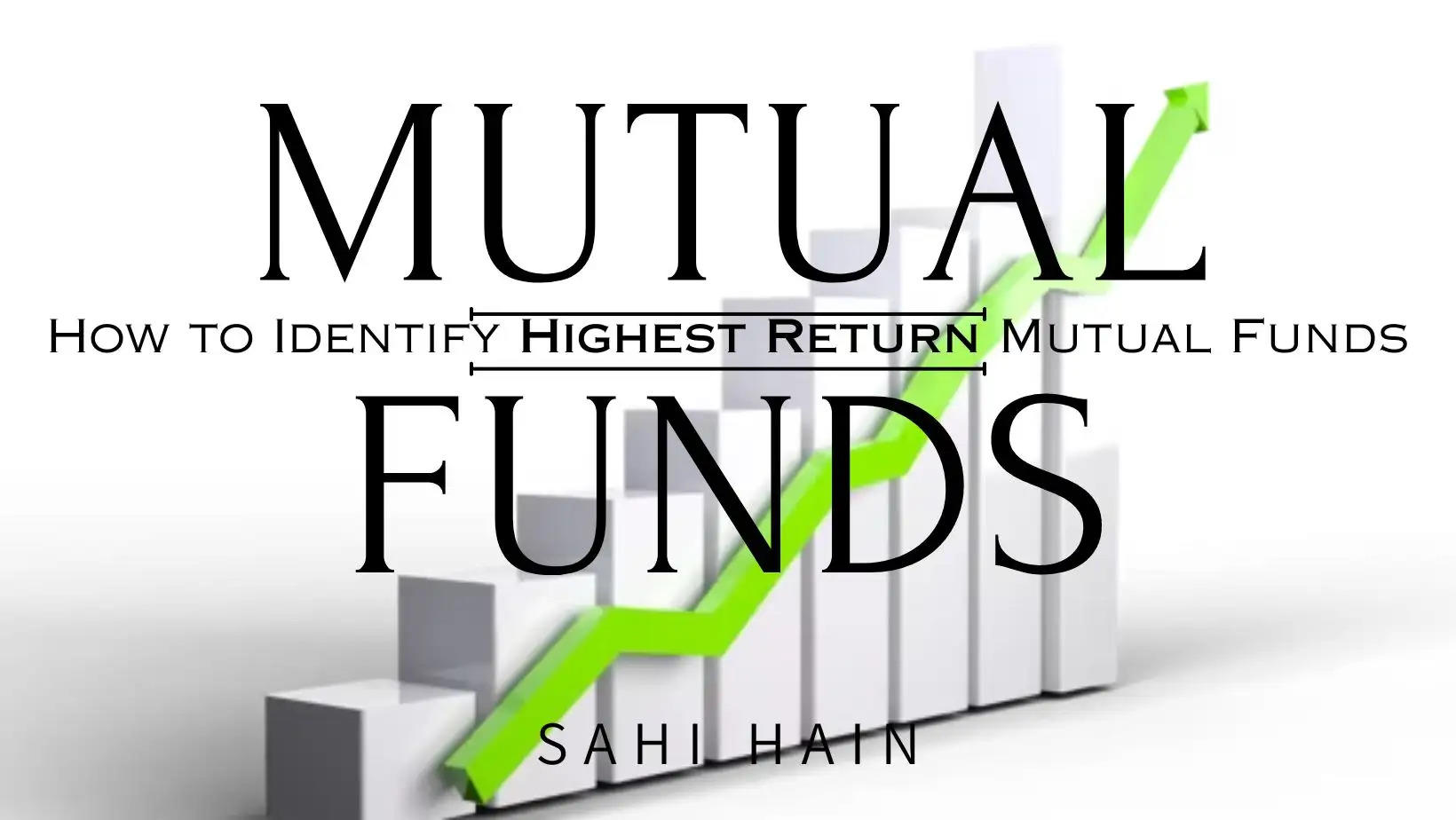Riding the High Returns Wave: How to Identify Highest Return Mutual Funds
When Arjun first started navigating investment avenues, mutual funds were at the top of his list. With encouragement and inspiration from his colleagues and friends, extensive research material available online and guidance from experts in the field, Arjun finally decided to invest in this investment avenue. With Sensex breaching its previous records, he too, wanted to ride on this high-returns wave.
In the below post, we shall focus on understanding the highest returns mutual funds, how they can help you achieve your financial goals, and things you must keep in mind before investing.
Defining High-Return Mutual Funds
As the name suggests, high-return mutual funds aim to generate higher-than-average returns. Although every mutual fund manager (especially equity-oriented) would have a similar objective, there are a few factors that differentiate a high-return mutual fund from the rest.
-
High-returns mutual funds invest in higher-risk instruments; thus, with higher volatility, there are increased chances of better returns.
-
These funds are actively managed, meaning they try to take advantage of price volatility.
-
These funds tend to have a higher expense ratio. The expense ratio is the maintenance fee charged by the mutual fund. Since these funds are actively managed, they have a higher expense ratio.
Analysing Historical Performance
One of the common ways to choose a mutual fund scheme is by analysing a fund's historical performance. However, this should not be the sole reason to make a purchase decision. Here's a look at how to research and evaluate mutual fund performance.
-
Compare it against the benchmark: Firstly, identify the fund's benchmark and compare its performance against it. A high-return mutual fund will always try to beat its benchmark in the long term.
-
Compare it against competitors: Similar to the benchmark, track your fund's performance against similar funds.
-
Consider historical performance: It is essential to track the fund's performance in different time frames like, 1, 3 or 5 years. Additionally, also evaluates the performance during both scenarios, upward and downward market trends. Although past performance is no indication of the future, it still gives you a clear idea of where the fund stands vis-a-vis your expectations.
-
Compare risk-adjusted returns: This measures the returns earned by the scheme after making adjustments for the risk taken.
-
Look at the fund manager's tenure and experience: The fund manager's experience, tenure and ability to navigate different market cycles play a key role in fund performance.
Fund Type and Objectives
Typically, Mutual Funds can be divided based on structure and Asset Class:
Based on Structure:
-
Open-ended funds (invest and redeem anytime)
-
Close-ended funds (fixed maturity date)
Based on Asset Class:
-
Equity (at least 65% of the assets are invested in stocks)
-
Debt (investment in fixed-income securities)
-
Hybrid (investment in both equity and debt)
These funds will seek to fulfil any one or more of the below objectives:
-
Diversification
-
Capital growth
-
Capital protection
-
Tax saving
Diversification and Asset Allocation
While diversification is spreading your risks across various asset classes, asset allocation refers to the weightage that you give to stocks, bonds and cash in your portfolio.
Both can help you manage risk and strike the right balance between risk and return in your portfolio. For example, if Meena diversifies her portfolio by allocating 40% to stocks or mutual funds, 30% to debt instruments and 30% to real estate, she mitigates volatility. Hence, this lessens the negative impact on her portfolio in case one of the asset classes underperforms.
Monitoring and Review
Monitoring and review of your portfolio is essential regardless of the type of investment you hold. Mutual funds are no different. Monitoring your refund performance may give you insights into whether the fund is still aligned with your objective and expectations. Review, on the other hand, helps you evaluate and decide if you need to make any changes to your existing investment.
Monitoring and review of your mutual fund portfolio is essential for stability, security, and achieving your long-term goals.
Conclusion
While choosing the highest return mutual fund, ensure you assess your risk appetite and investment objectives and opt for investment platforms in India that offer a host of features and resource materials and are easy to use.
To join us on Facebook Click Here and Subscribe to UdaipurTimes Broadcast channels on GoogleNews | Telegram | Signal



